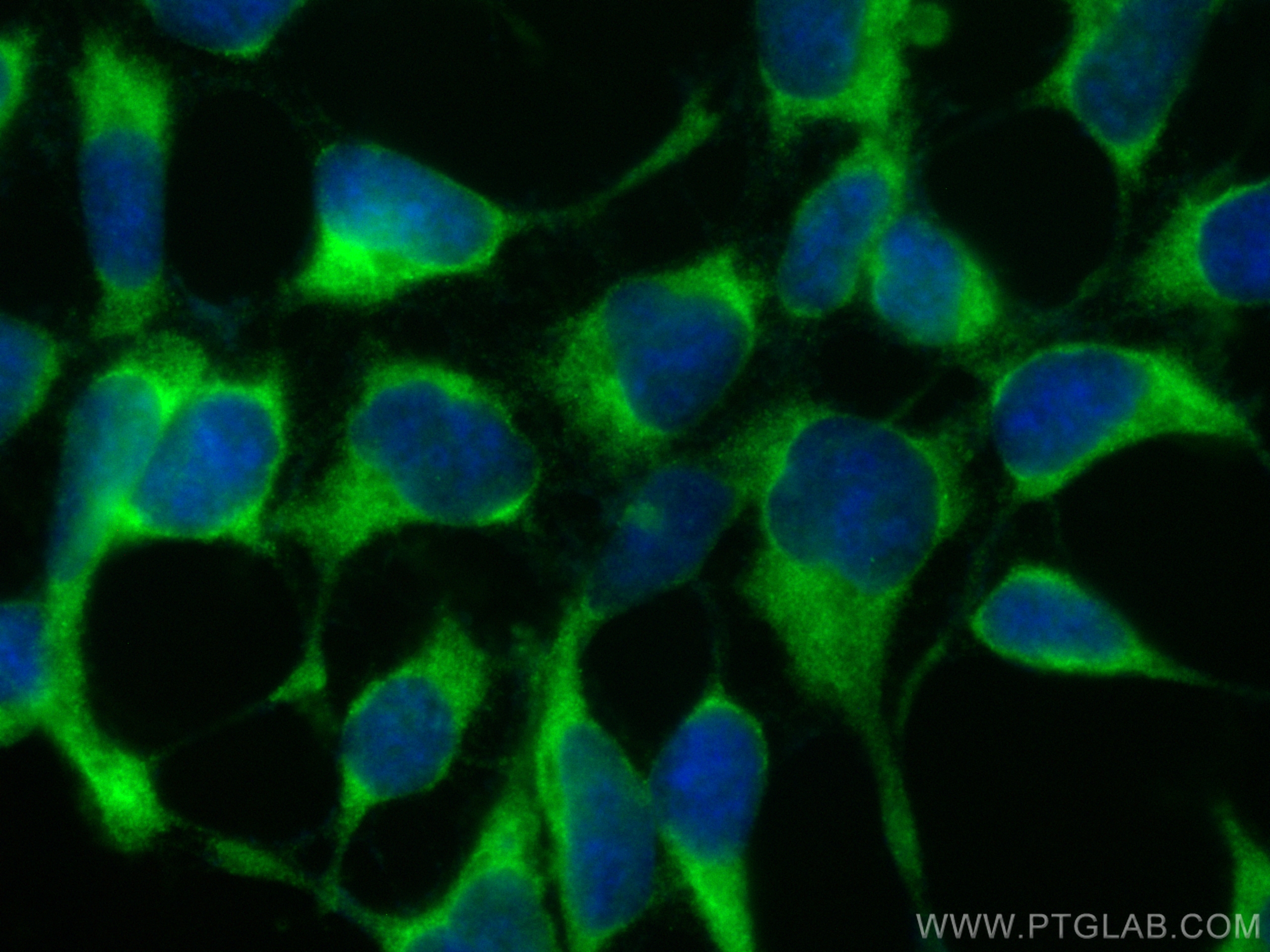验证数据展示
经过测试的应用
| Positive IF/ICC detected in | HEK-293 cells |
Planning an IHC experiment? We recommend our IHCeasy ATP6V1G1 Ready-To-Use IHC Kit. ATP6V1G1 primary antibody included.
For other applications, we recommend the unconjugated version of this antibody, 16143-1-AP
推荐稀释比
| 应用 | 推荐稀释比 |
|---|---|
| Immunofluorescence (IF)/ICC | IF/ICC : 1:50-1:500 |
| It is recommended that this reagent should be titrated in each testing system to obtain optimal results. | |
| Sample-dependent, Check data in validation data gallery. | |
产品信息
CL488-16143 targets ATP6V1G1 in IF/ICC applications and shows reactivity with human, mouse, rat samples.
| 经测试应用 | IF/ICC Application Description |
| 经测试反应性 | human, mouse, rat |
| 免疫原 |
CatNo: Ag9217 Product name: Recombinant human ATP6V1G1 protein Source: e coli.-derived, PGEX-4T Tag: GST Domain: 1-118 aa of BC008452 Sequence: MASQSQGIQQLLQAEKRAAEKVSEARKRKNRRLKQAKEEAQAEIEQYRLQREKEFKAKEAAALGSRGSCSTEVEKETQEKMTILQTYFRQNRDEVLDNLLAFVCDIRPEIHENYRING 种属同源性预测 |
| 宿主/亚型 | Rabbit / IgG |
| 抗体类别 | Polyclonal |
| 产品类型 | Antibody |
| 全称 | ATPase, H+ transporting, lysosomal 13kDa, V1 subunit G1 |
| 别名 | ATP6G, ATP6G1, ATP6GL, ATP6J, ATP6V1G1, V ATPase 13 kDa subunit 1, V ATPase subunit G 1, Vma10 |
| 计算分子量 | 118 aa, 14 kDa |
| 观测分子量 | 14 kDa |
| GenBank蛋白编号 | BC008452 |
| 基因名称 | ATP6V1G1 |
| Gene ID (NCBI) | 9550 |
| RRID | AB_3672644 |
| 偶联类型 | CoraLite® Plus 488 Fluorescent Dye |
| 最大激发/发射波长 | 493 nm / 522 nm |
| 形式 | Liquid |
| 纯化方式 | Antigen affinity purification |
| UNIPROT ID | O75348 |
| 储存缓冲液 | PBS with 50% glycerol, 0.05% Proclin300, 0.5% BSA, pH 7.3. |
| 储存条件 | Store at -20°C. Avoid exposure to light. Stable for one year after shipment. Aliquoting is unnecessary for -20oC storage. |
实验方案
| Product Specific Protocols | |
|---|---|
| IF protocol for CL Plus 488 ATP6V1G1 antibody CL488-16143 | Download protocol |
| Standard Protocols | |
|---|---|
| Click here to view our Standard Protocols |


